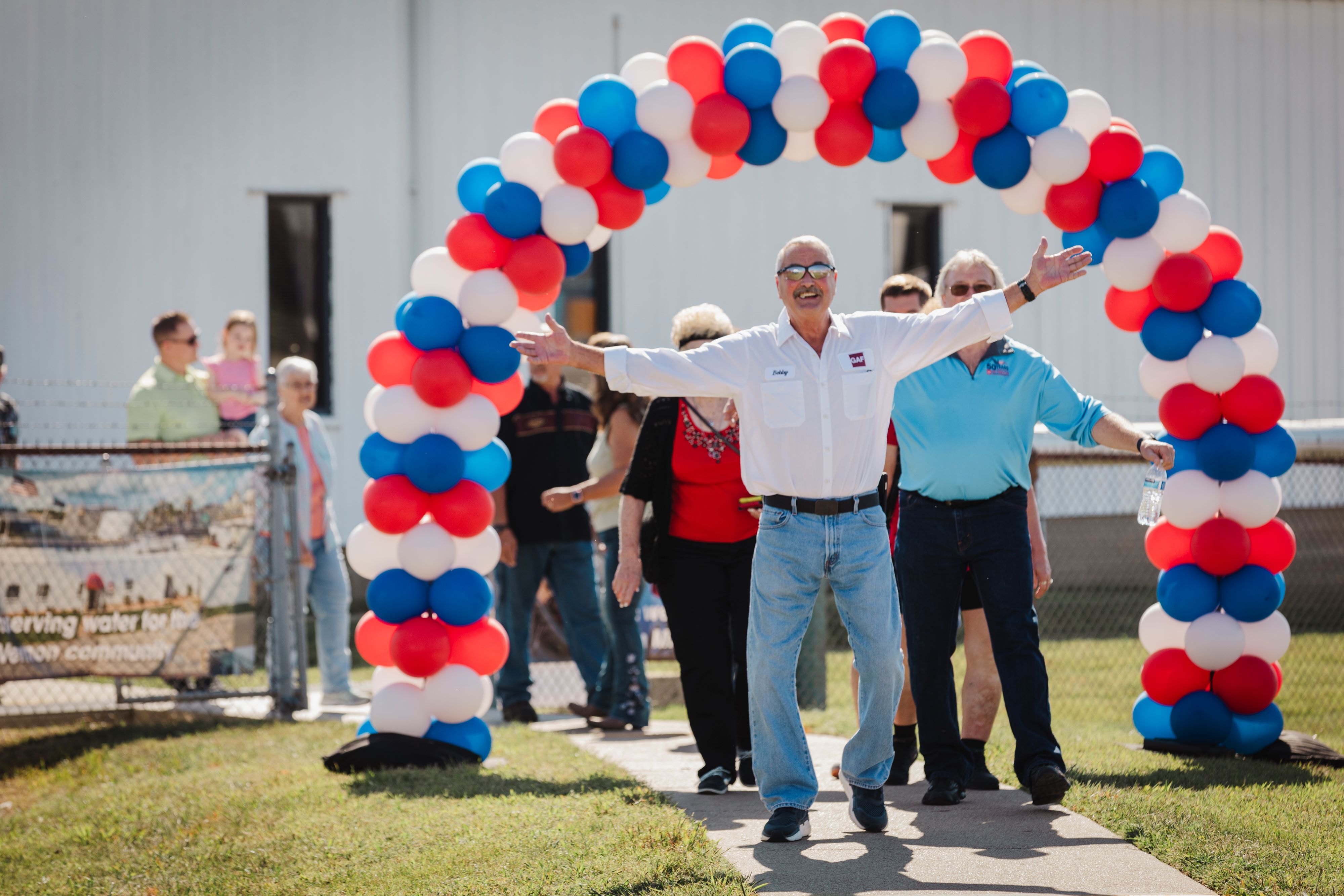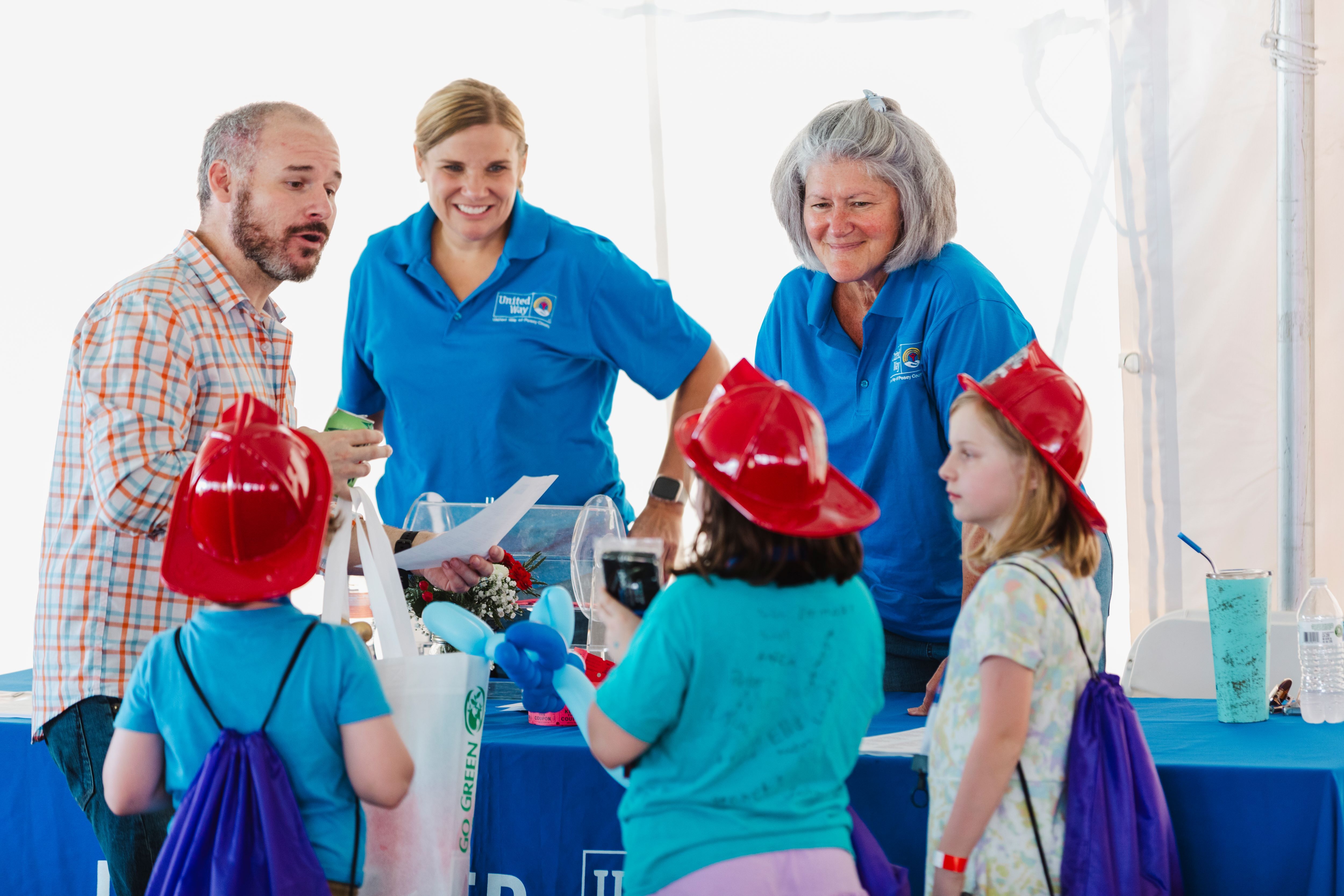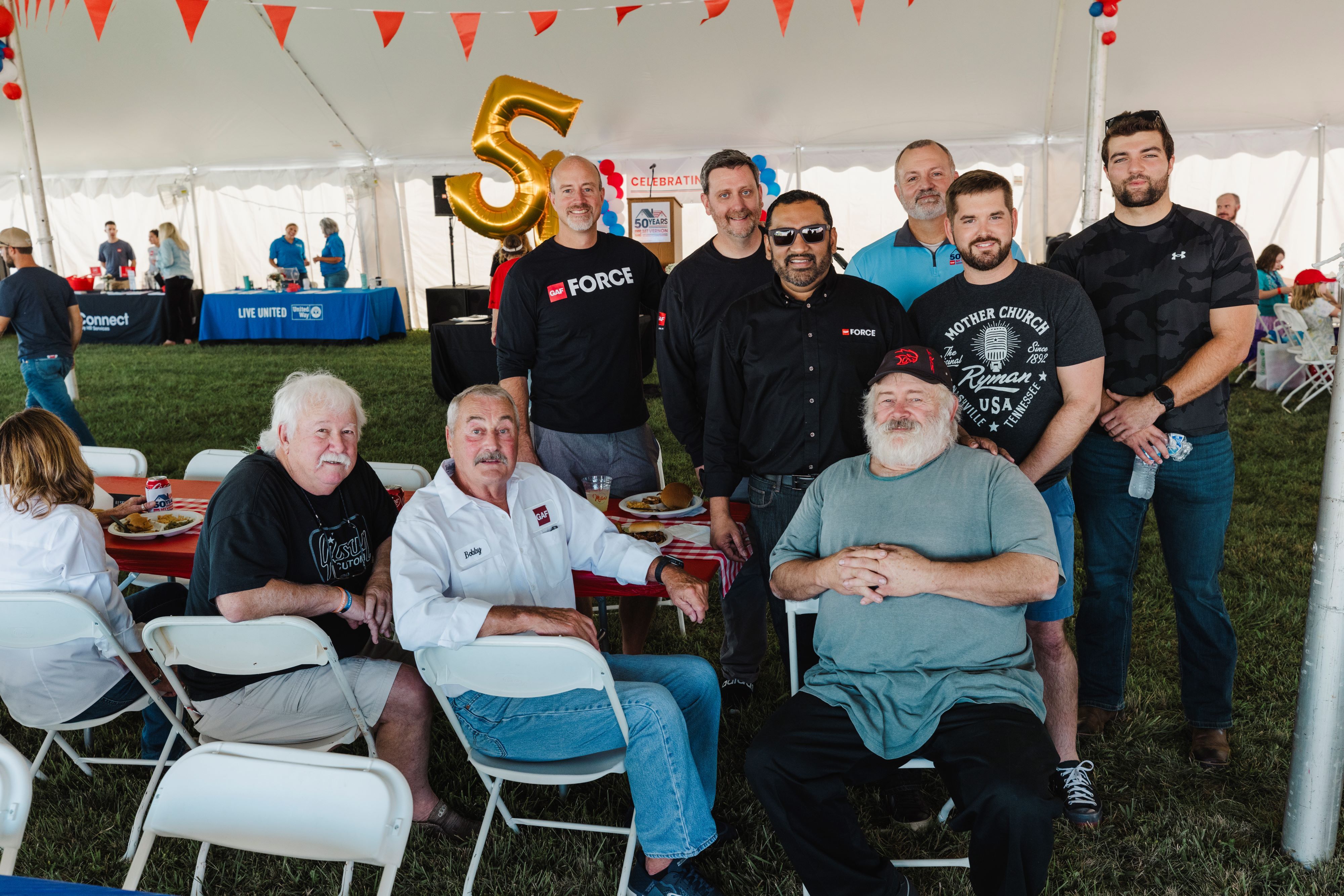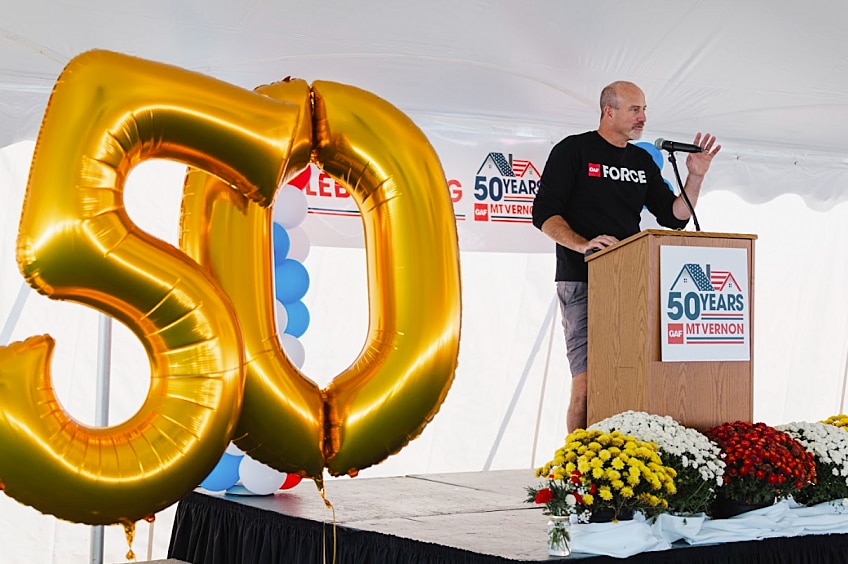On September 30, 2023, the GAF manufacturing plant in Mt. Vernon, Indiana celebrated its 50th year in operation. The occasion brought together current and retired Mt. Vernon team members, their families, and community members to commemorate all that the plant has accomplished over the last five decades.
"Whether our team members have just joined us, or have been here for 25 or more years, they've all played a major role in an impressive history," says Steven Kiso, Senior Director of Operations. "It's certainly something to celebrate."
Not only has the Mt. Vernon team grown to be like family—with colleagues who are actual family members in some cases—the plant has produced thousands of cutting-edge GAF roofing products in its time. Including, asphalt shingles as well as accessories that make up part of a complete roofing system. They also produced rolled roofing products for both residential and commercial buildings with no plans to slow down.

Making Strides Toward the Future
Over the last 50 years, the GAF plant in Mt. Vernon has prioritized innovation to deliver for its customers—predominantly through investment in technology, which Wendy Collins, an HR business partner at GAF, describes as "next level." Today, employees use Chromebooks to advance their skills and take advantage of resources. Additionally, the plant is often used as a testing site for new machines and different ways of working. This offers valuable insight into how innovations can be shared across GAF's other manufacturing sites.
Through automation and investment in new equipment, the plant has expanded its offerings to include not only asphalt shingles and accessories, but also TPO membranes. This has enabled other departments to expand as well, including the the shipping department.
"Over the last 50 years, the Mt. Vernon plant has helped create the most distinctive and premium products for our customers," notes Joby John, VP Residential and Vertical Manufacturing. "I congratulate them on an impressive run over the last five decades and am looking forward to many more to come."
While there have been several initiatives over the last few years that have made a difference, Collins notes that an initiative designed to generate input from frontline employees has made some of the biggest changes. "Leaders know ideas can come from anywhere," she explains. "As a result, we have implemented so many great ideas from our frontline team."
Just like the other plants across GAF, Mt. Vernon is always striving to develop and make things better.
Caring for the Community
Both the plant and its employees have been a fixture in the local Mt. Vernon community during the last half-century. Every summer, employees spend a week giving back to their community through an initiative called Feeding Our Future, where they pack bagged lunches and provide meals to local families in need. In the past year, GAF team members have also supported Habitat for Humanity and the United Way of Posey County during their United Way Day of Caring.

Through the GAF Community Matters program, the Mt. Vernon team has fostered an incredibly supportive environment. In turn, the shared dedication and widespread engagement has enabled the group to build a strong, close-knit community that extends beyond the plant's walls. This dedication to supporting neighbors has been recognized at the highest levels of GAF. In fact, the plant received an award for community engagement at this year's Operations Leadership Meeting.
Helping to Protect the Environment
The GAF team not only cares about the community, but also the local environment. The Mt. Vernon location was the first UL Environmental Zero Waste to Landfill Diversion facility to be validated. The program allows for a variety of methods of diversion, such as reuse, recycling, and composting. Companies that achieve a landfill diversion rate of at least 90 percent qualify for the Zero Waste to Landfill validation.
"I appreciate the Mt. Vernon team's continued commitment to protecting what matters most," says Randy Bargfrede, chief operations officer. "They continue to raise the bar when it comes to delivering for our customers, supporting our communities, and manufacturing top quality products safely."
Working Toward the Next Milestone
The plant's continuing dedication to the community, innovation, and protecting the environment has defined the last 50 years and will continue to live on. GAF is proud to celebrate the Mt. Vernon crew and thank them for all their hard work and dedication.

Interested in learning about GAF's network of manufacturing facilities and the communities they call home? Visit gaf.com/manufacturing.

